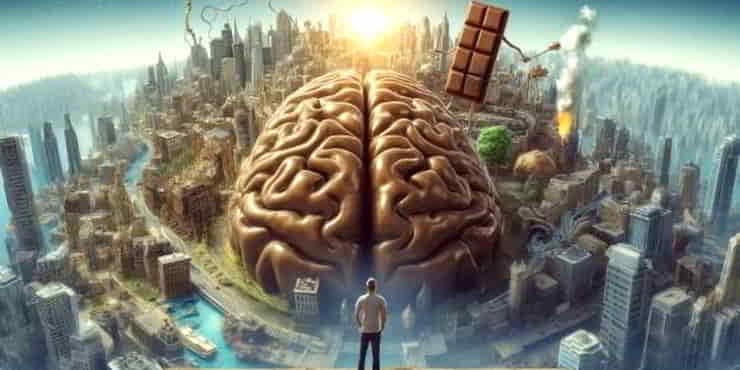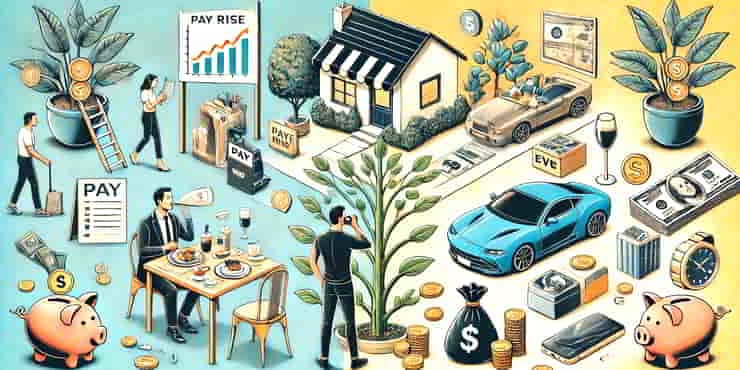Breaking Bad Habits: Neurological Approaches to New Beginnings

Estimated reading time: 8 Min
Breaking bad habits is a challenge we all face at times. Explore the brain’s flexibility and how to change a bad habit to whatever it is that you want.
Why is it that the chocolate bar seems to call your name just when you’ve vowed to eat healthily?
Or why does the snooze button become an irresistible siren song when it’s time to wake up early for a jog?
That’ll be the universal struggle against bad habits.
Just imagine: your brain is a vast and bustling city, with pathways and routines deeply engraved like well-trodden streets.
It’s daunting.
But realise this: the most complex organ, your brain, could become your closest ally in overcoming these pesky habits.
Here, we explore how.
Understanding the Enemy: The Science of Habits
Imagine your brain is a garden, and habits are the paths trodden through the grass.
The more a path is walked on, the more defined it becomes, making it easier to follow without thinking.
This is how habits form: neural pathways carving out familiar routes in our brains.
Neural pathways are a bit like the stairways at Hogwarts in Harry Potter stories, which constantly shift, thereby creating new connections between floors at Hogwarts.
Neurones are able to constantly build new connections.
But what exactly are these habits?
They’re routines that once required a lot of thought but now happen almost automatically, thanks to the cue, routine, and reward cycle.
Imagine the smell of coffee (cue) leading you to brew a cup (routine), which results in that blissful first sip (reward).
Understanding this cycle is the first step to rewriting the script.
The Brain’s Plasticity: The Key to Change

Imagine the brain’s ability to change.
Despite the old dogma that adult brains are fixed and unchangeable, research has shown for years now that our brains can form new connections and pathways at any age.
Here are a couple of stories of real people who’ve turned their lives around by harnessing the power of their adaptable brains.
1. Joshua Fields Millburn
Joshua Fields Millburn, one half of the duo known as The Minimalists, underwent a profound personal transformation through habit change.
Originally a high-flying corporate executive, Millburn was drowning in debt, stress, and unhappiness.
He began questioning his life’s direction following the sudden death of his mother and the end of his marriage.
This questioning led him to adopt minimalism, systematically eliminating excess from his life, which was both physical and metaphorical decluttering.
By changing his habits regarding consumption and lifestyle, Millburn experienced a significant improvement in mental clarity, emotional balance, and overall happiness.
He and his partner now write, speak, and make documentaries about their journey, inspiring others to explore the benefits of simplifying life.
2. James Clear
James Clear, author of the best-selling book Atomic Habits, is a prime example of someone who used the understanding of tiny habits to significantly alter his trajectory.
After suffering a serious sports injury in high school, Clear’s ability to play baseball was severely compromised.
During his recovery, he began implementing small habits daily, focusing solely on what was immediately actionable and within his control.
These habits included everything from his study patterns to his physical therapy exercises.
Over time, these small changes compounded, leading not only to a recovery that allowed him to play baseball at the collegiate level but also helping him develop a framework for mastering habits that he later outlined in his book.
His work emphasises the power of small, incremental changes, which can lead to remarkable achievements over time.
But can you teach an old dog new tricks?
Absolutely, yes, you can!
Both of these stories illustrate that profound life changes are possible when habits are understood as the neurological patterns they are and tackled with strategic changes in routine and mindset.
These stories underscore the brain’s plasticity and the possibility of rewriting one’s life script through deliberate, consistent effort—a powerful testament to the principle that while habits may be challenging to break, with knowledge, strategy, and perseverance, transformation is achievable.
The brain’s plasticity means we can form new habits and ditch the old ones, effectively rewiring our neural circuitry.
What’s more, once we’re aware, we can take action to preserve and even improve brain plasticity.
If others can do it, so can you!
Declaring War on Bad Habits
So, how do we start this battle?
First, we set ourselves up for success.
It’s not just about willpower; it’s about strategy.
Identify your cues and rewards, then shake up the routine in the middle.
Arm yourself with knowledge, tools, and techniques to ambush the old habits from every angle.
Think of your environment as a battlefield.
Is it helping you or hindering you?
Surround yourself with reminders of your new goals and eliminate the triggers of your old habits.
And remember, every general needs allies.
Build a support network of friends, family, or fellow habit-breakers who’ve got your back.
Strategies for Lasting Change
Right, it’s game time.
Imagine you’re the coach, the player, and the tactician all rolled into one.
The goal?
You need to make a decision. Decide which habit you want to change and what you want instead.

The plan?
To break a bad habit, step by step.
First, pinpoint your triggers (cues).
Is it stress?
Boredom?
Understanding the ‘why’ is like finding the enemy’s hidden base.
Now, the mind games begin.
Enter mindfulness, the art of staying in the moment.
It’s like being a goalie, ready to catch whatever comes your way.
Visualise success; it’s not daydreaming; it’s rehearsing victory.
But it’s not all in your head.
Your body is your temple.
A well-rested, well-nourished, and active body is a fortress against the siege of bad habits.
Remember, you’re not just fighting a habit; you’re crafting a new you.
Leveraging Technology and Neuroscience
Welcome to the future, where apps and gadgets aren’t just for fun—they’re part of your arsenal.
Imagine a world where your phone nudges you towards good habits and away from bad ones.
Or better yet, gadgets that track your progress, turning habit formation into a game where you’re the high scorer.
But let’s go deeper—into the brain itself.
Neuroscience isn’t just for scientists; it’s for me and you as well!
Techniques like brain stimulation are on the frontier, promising a day when we can directly tweak the brain’s habit machinery.
While it sounds like science fiction, it’s becoming science fact.
The Journey Ahead: Building New, Positive Habits
Now, let’s move on.
You’ve cleared the land of weeds; now it’s time to plant new seeds.
Imagine your new habits as saplings in your brain’s garden.
They need care, consistency, and time to grow.
This is where habit stacking comes in—attaching new habits to established ones, like following a glass of water with a vitamin.
But here’s the kicker: the secret ingredient is time.
Unlike a microwave meal, there’s no instant setting for new habits.
Patience isn’t just a virtue; it’s a requirement.
Overcoming Setbacks and Maintaining New Habits
Be warned that the road to victory is paved with setbacks.
But here’s the thing: setbacks are not failures; they’re detours, not dead ends.
When you slip, don’t fall into the guilt trap. Instead, ask, ‘Why did I slip?’
Use it as a learning moment, not a reason to give up.
Imagine that your new habits are a garden you’ve grown.
Maintenance is key.
Keep watering, keep pruning, and keep sunning.
This is your new routine, your new normal.
And remember, this is not a sprint; it’s a marathon, one where the prize is a stronger, happier you.
Summary: Breaking Bad Habits: A New Beginning
We started here looking at the brain as if it were set in stone, only to discover it’s more like clay.
Or, like the stairways at Hogwarts, be able to constantly build new connections.
You’ve learned the science, armed yourself with strategies, and prepared for the long haul.
Now, the rest of the story is yours to write.
Consider this not as the end, but as a new beginning.
Breaking bad habits isn’t just about saying ‘no’ to the old; it’s about saying ‘yes’ to the new.
You’ve got the tools, the knowledge, and the power.
Now, it’s time to turn that power into action.
Remember to be patient.
However, there are faster ways to change habits that often work. If you’d like to learn how, let me know in the comments or via the contact form.
😉
Richard
Appendix: Resources and Tools
You’re not alone on this journey.
There’s a world of resources out there—books, websites, apps, and communities—all dedicated to helping you succeed.
- “Why Do I Keep Doing This!!?” by Judith Pearson: End bad habits, negativity, and stress with self-hypnosis and NLP.
- “The Power of Habit: Why We Do What We Do in Life and Business” by Charles Duhigg: This book provides a comprehensive exploration of the science behind habits and how they are formed, maintained, and changed. Duhigg explains the cue, routine, and reward loop in a detailed yet accessible manner, providing real-world examples and strategies for overcoming bad habits. This resource would enrich the sections discussing the fundamental science of habits and practical ways to rewire them.
- “Brain Rules” by John Medina: In this book, Medina, a molecular biologist, shares his insights on how the brain works and how we can exploit its natural functionalities to enhance our lives. The book covers aspects of neuroplasticity and how understanding the brain’s natural tendencies can help in forming new, healthier habits. This resource complements the “Brain’s Plasticity: The Key to Change” section by providing scientific grounding and additional strategies based on our understanding of brain function.
- Neuro-Linguistic Programming (NLP) Techniques: The Association for Neuro Linguistic Programming (ANLP) provides resources, research, and case studies on how NLP can be effectively used to change habits and behaviours. NLP techniques often focus on the linguistic and psychological aspects involved in forming habits and provide practical tools for mental reprogramming. Their website offers access to articles, practitioner listings, and event information, which can support the “Strategies for Lasting Change” section by offering alternative psychological tools for habit modification.
These resources not only provide additional depth to the narrative but also offer practical advice and scientific backing for the strategies discussed in the text, helping to make complex concepts more tangible for readers.
In reading through to here, you’ve just taken the first step. Congratulations, and welcome to your new beginning. Now just keep going…







Thank you Richard for your very informative post.
Regards, Corinne :-)))
You’re welcome Corinne. What have I missed, or what did you find particularly interesting?